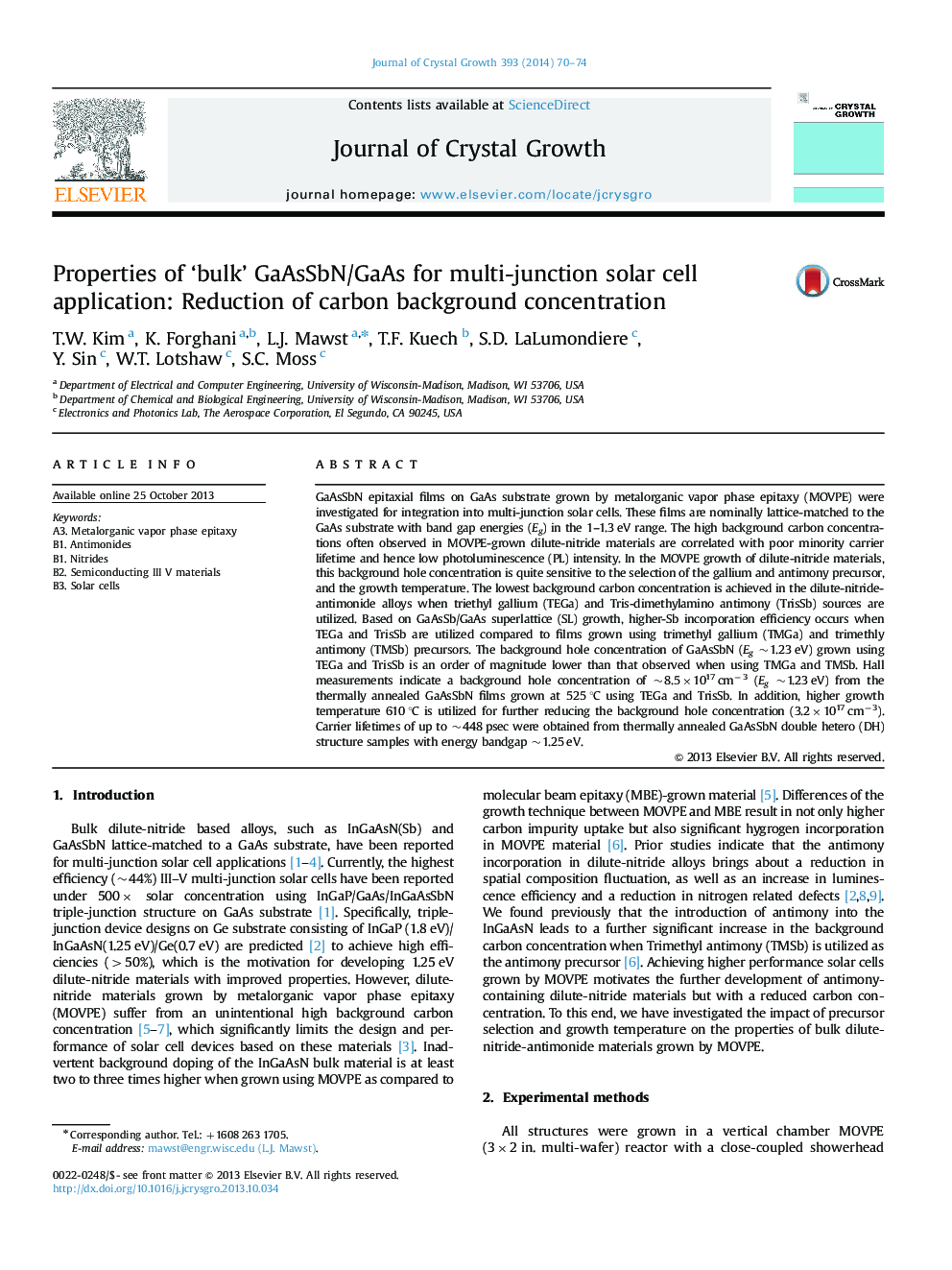| Article ID | Journal | Published Year | Pages | File Type |
|---|---|---|---|---|
| 8151164 | Journal of Crystal Growth | 2014 | 5 Pages |
Abstract
GaAsSbN epitaxial films on GaAs substrate grown by metalorganic vapor phase epitaxy (MOVPE) were investigated for integration into multi-junction solar cells. These films are nominally lattice-matched to the GaAs substrate with band gap energies (Eg) in the 1-1.3 eV range. The high background carbon concentrations often observed in MOVPE-grown dilute-nitride materials are correlated with poor minority carrier lifetime and hence low photoluminescence (PL) intensity. In the MOVPE growth of dilute-nitride materials, this background hole concentration is quite sensitive to the selection of the gallium and antimony precursor, and the growth temperature. The lowest background carbon concentration is achieved in the dilute-nitride-antimonide alloys when triethyl gallium (TEGa) and Tris-dimethylamino antimony (TrisSb) sources are utilized. Based on GaAsSb/GaAs superlattice (SL) growth, higher-Sb incorporation efficiency occurs when TEGa and TrisSb are utilized compared to films grown using trimethyl gallium (TMGa) and trimethly antimony (TMSb) precursors. The background hole concentration of GaAsSbN (Eg ~1.23 eV) grown using TEGa and TrisSb is an order of magnitude lower than that observed when using TMGa and TMSb. Hall measurements indicate a background hole concentration of ~8.5Ã1017 cmâ3 (Eg ~1.23 eV) from the thermally annealed GaAsSbN films grown at 525 °C using TEGa and TrisSb. In addition, higher growth temperature 610 °C is utilized for further reducing the background hole concentration (3.2Ã1017 cmâ3). Carrier lifetimes of up to ~448 psec were obtained from thermally annealed GaAsSbN double hetero (DH) structure samples with energy bandgap ~1.25 eV.
Related Topics
Physical Sciences and Engineering
Physics and Astronomy
Condensed Matter Physics
Authors
T.W. Kim, K. Forghani, L.J. Mawst, T.F. Kuech, S.D. LaLumondiere, Y. Sin, W.T. Lotshaw, S.C. Moss,
